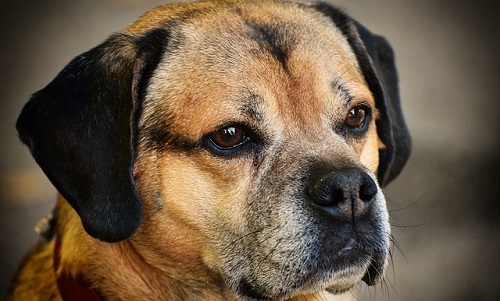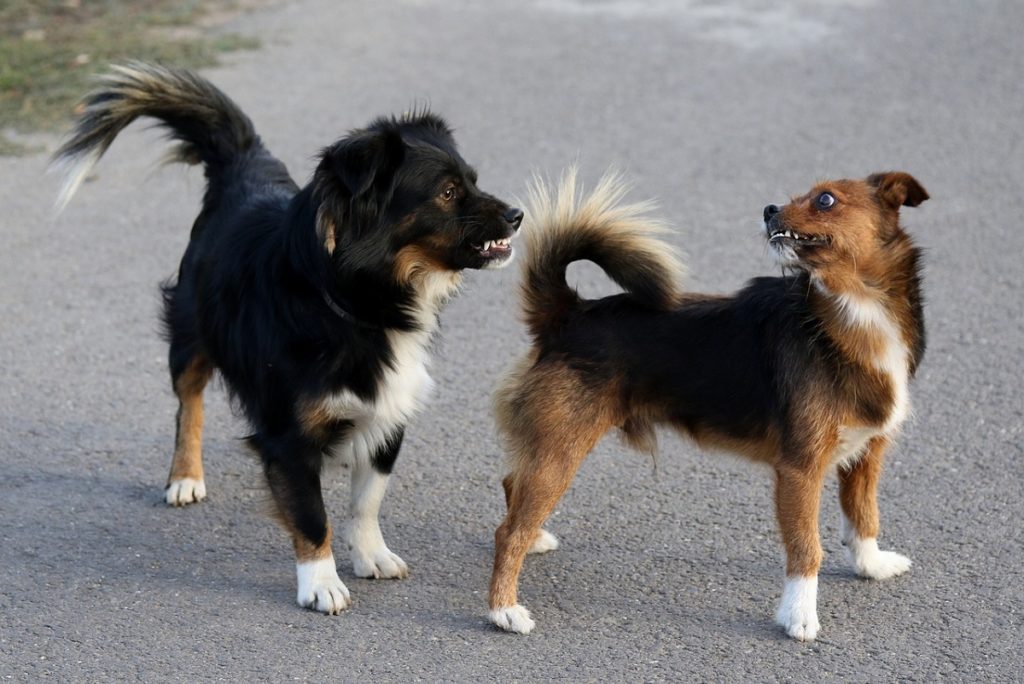If you ever find yourself saying to your vet, “my dog was bit by another dog”, you have reason for concern. This is a common fear among dog owners and a fairly common occurrence. Dogs are often inquisitive and social, which is why they approach other dogs to interact and play with them. However, some dogs can be aggressive and scared, which can lead to them biting your own pet.
If your dog is bitten by another dog, it is important to know what to do to make sure you can get your dog the care he needs. Dog bites are always serious and require medical attention by a licensed veterinarian, but knowing the right steps to take immediately after the dog bite occurs can help your pet have a fast recovery. To make you better prepared, we have compiled a guide of what to do if your dog is bitten by another dog.
Get Your Dog to Safety
If your dog has been bitten by another dog, the first thing you need to do is get your dog to safety and stop the attack. This can be dangerous as you don’t want to also be bitten. If you grab an aggressive dog, they may attempt to bite or attack you, so it is important to check out your surroundings and use them to your advantage to get control of the situation. If the dog’s owner is nearby, tell them to get their dog as you get yours. If the aggressive dog is approached by a familiar person, they will be less likely to react with violence. If you are able to, you can grab your dog and pick them up to keep them out of range of the dog. If the dog’s owner is not nearby but there is a type of water source, dumping water on the dog or spraying him with a hose may distract him so that he stops biting your dog. The circumstances of the attack will determine how you need to react, but the first priority is to get your dog out of danger.
Check Your Dog’s Breathing and Heartbeat
 Once your dog is safely away, it is important to check his breathing and heartbeat. Some bite wounds can tear the diaphragm or puncture the lungs, which can cause breathing difficulties in dogs or no breathing at all. During this time, it is also important to check for your dog’s heartbeat. If your dog is not breathing and/or has no heartbeat, it is important to begin administering rescue breathing (CPR) for canines to jump-start respiration again. If your dog is experiencing respiratory issues, it is vital that they are taken to a licensed veterinarian immediately to receive treatment.
Once your dog is safely away, it is important to check his breathing and heartbeat. Some bite wounds can tear the diaphragm or puncture the lungs, which can cause breathing difficulties in dogs or no breathing at all. During this time, it is also important to check for your dog’s heartbeat. If your dog is not breathing and/or has no heartbeat, it is important to begin administering rescue breathing (CPR) for canines to jump-start respiration again. If your dog is experiencing respiratory issues, it is vital that they are taken to a licensed veterinarian immediately to receive treatment.
Control Bleeding From Wounds
If your dog is bleeding from the bite(s), it is vital to get the bleeding under control as quickly as possible. To control the bleeding, apply a clean towel, washcloth, or fabric to the wound and apply steady, firm pressure. Dog bites can bleed profusely depending on the location of the bite. Within roughly five minutes of applying pressure to the bite, the bleeding should have significantly slowed or ceased entirely.
Keep Your Dog Calm
Once you have controlled the bleeding, it is vital to get to a veterinarian as soon as possible so that your dog can get the medical attention he needs. Because your dog has just experienced a traumatic event and a bite, he is likely agitated and trying to move around. This can cause further injury to the bite area, so it is important to keep your dog as calm as possible as you take him to the veterinarian so that he does not injure himself further.
Seek Immediate Veterinary Care
 If your dog has experienced a dog bite, it is important for them to be assessed by a licensed veterinarian immediately. Once your dog is assessed by a licensed veterinarian, they can prescribe appropriate treatment based on the wound(s). The veterinarian will thoroughly clean the wound to prevent infection and will typically prescribe antibiotics for a small wound or insert a surgical drain or a large wound.
If your dog has experienced a dog bite, it is important for them to be assessed by a licensed veterinarian immediately. Once your dog is assessed by a licensed veterinarian, they can prescribe appropriate treatment based on the wound(s). The veterinarian will thoroughly clean the wound to prevent infection and will typically prescribe antibiotics for a small wound or insert a surgical drain or a large wound.
Administer Home Care
Once your dog has been assessed and treated by a licensed veterinarian and is cleared to return home, it is necessary to administer home care to make sure a canine bactrial infection does not occur. To do so, it is important to make sure that the wound is cleaned thoroughly and gently several times a day. The wound should also receive an antibiotic ointment placed on it every day and be covered in a sterile bandage to prevent infection. If the veterinarian has prescribed any medications or antibiotics, their instructions should also be adhered to make sure your dog receives the full course of treatment needed to recover from the dog bite.
Sources:
- “How to Treat an Animal Bite On a Dog: First Aid Tips to Save Your Pet.” The Spruce Pets, Accessed 2 Nov. 2018. www.thesprucepets.com/dog-bite-treatment-2804653.
- “How to Treat Dog Bite Wounds.” Cesar’s Way, 12 Apr. 2017, Accessed 2 Nov. 2018. www.cesarsway.com/dog-care/cuts-wounds/how-to-treat-dog-bite-wounds.
- “Puncture Wounds in Dogs.” PetMD, Accessed 2 Nov.2018. www.petmd.com/dog/emergency/accidents-injuries/e_dg_puncture_wounds.
- “What To Do When My Dog Has Been Bitten by An Animal?” VRC, 13 July 2016, Accessed 2 Nov. 2018. www.vrcmalvern.com/dog-bitten-emergency/.
- “Dog Bites.” WebMD, Accessed 2 Nov. 2018. www. pets.webmd.com/dogs/dog-bites#1




